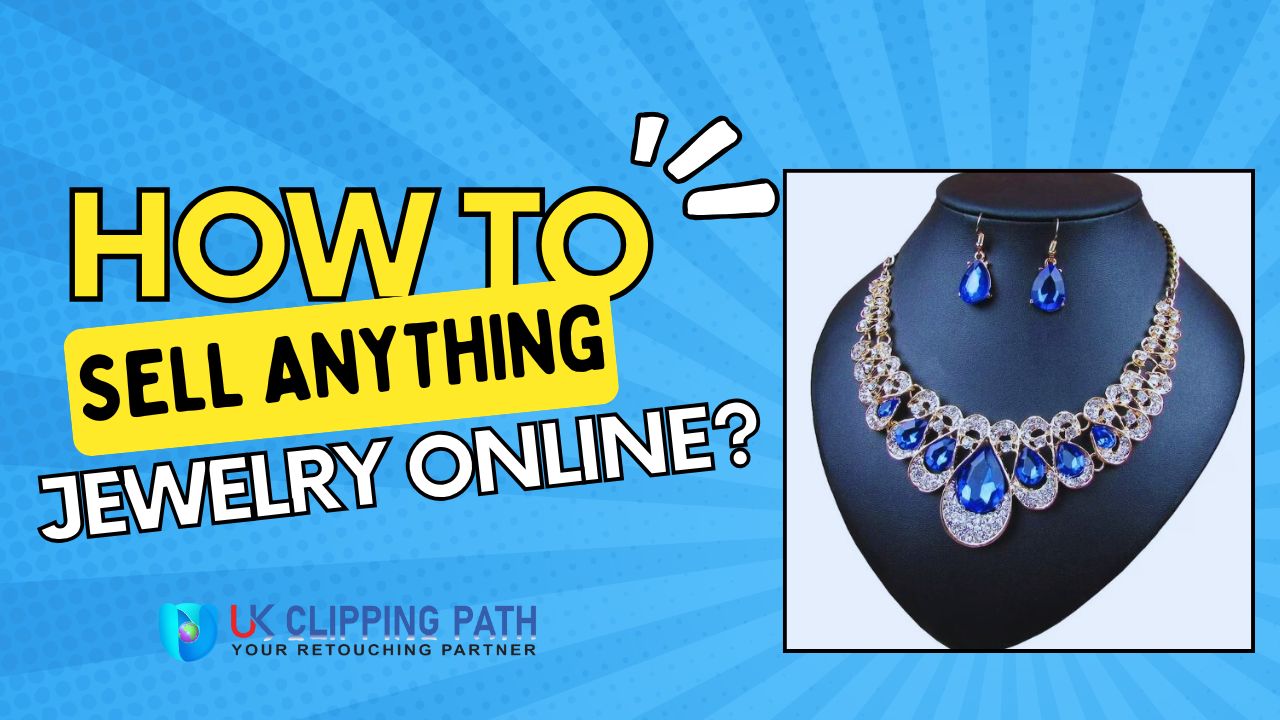Selling jewelry online may feel fun, yet scary at the same time. The good news is that you can build a store, get buyers there, and grow your brand with the right plan. Jewelry is one of the best products to sell because it’s personal, emotional, and always in demand.
This guide will go through the step-by-step process you need to know how to sell jewelry online. You will acquire knowledge about everything regarding selling platforms, setting up your store, pricing, photography, marketing, and shipping in the course of selling.
When the guide concludes, you will have an action plan ready to launch and actively grow your jewelry business.
Start Selling Jewelry Online Today – Step by Step Guide
This step-by-step guide is created specifically for complete beginners and no need technical skills, no business background, and no prior online selling experience required. Whether you want to sell handmade jewelry, vintage pieces, or curated collections, this guide will walk you through the process in a simple, practical, and realistic way.
Understanding the Online Jewelry Market
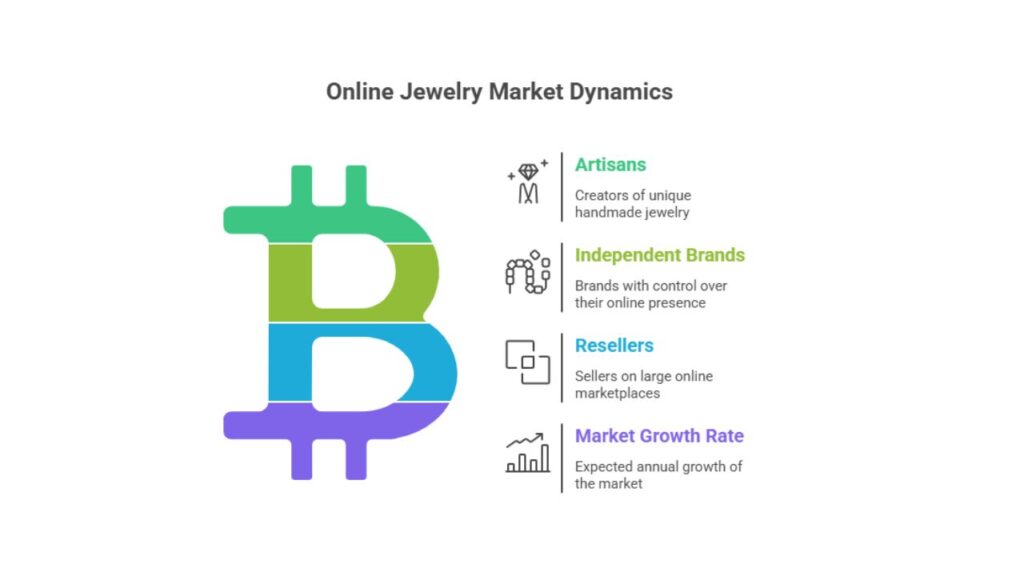
Jewelry is beautiful and displays well in pictures, videos, and social media. Additionally, giving jewelry is an accepted part of our culture. From a birthday to an anniversary, to a holiday, jewelry always seems a good option. On top of that, more and more people are demanding personalized gifts that tell their own story, which is much easier when you are shopping online.
In this bright new digital world, there are several categories of sellers:
- Artisans focus on creating unique handmade items, representing their creativity and soul. You often find artisans selling on Etsy, where true art and craft can shine.
- Independent Brands focus on marketing the brand they built. They often have an independently owned website where they have total control over how their shop looks.
- Resellers find jewelry manufactured by someone else and resell it to you. Resellers can often be found on popular online marketplaces like Amazon or eBay because they have a large audience and community on one site.
No matter what category you are in, the online jewelry market offers an opportunity. The expected annual growth rate of the online retail market for jewelry is 13.8%. There is no better time to start your online jewelry business than now!
Choosing the Right Platform
A good platform simplifies your operation and helps build trust with your customers.
- If you are selling handmade jewelry or small-batch jewelry, Etsy is a great platform. Etsy has a loyal audience of craft and novelty lovers; however, there will be high competition, as there may be thousands of sellers.
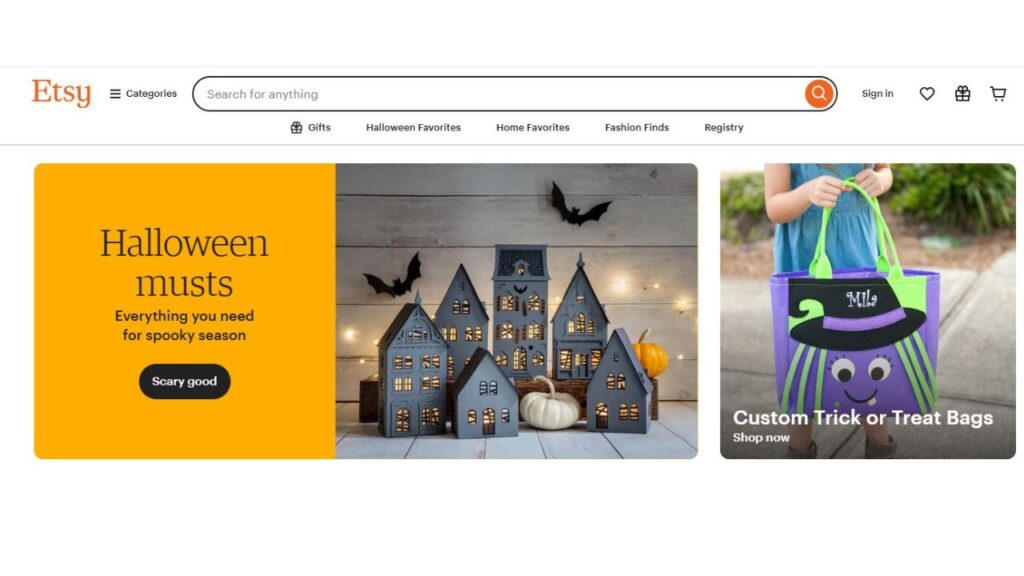
- Shopify is ideal if you are looking to build your own brand. You can build your store, utilize apps, and grow without limits, although it takes more effort to launch than on a platform like Etsy. However, it can secure long-term value.
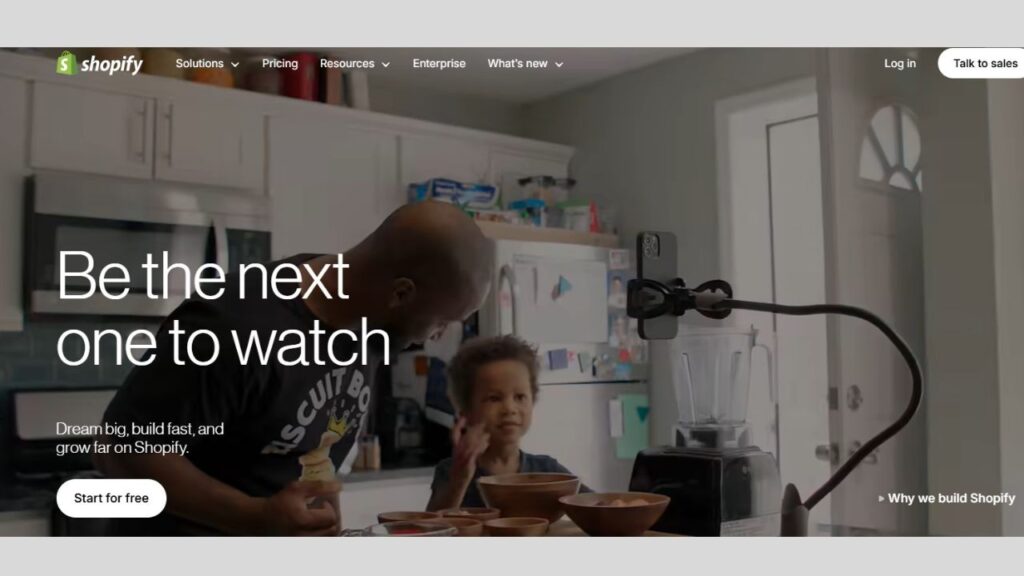
- Amazon Handmade or eBay is good if you’re looking to quickly access millions of buyers. However, prices and fees can be much higher, and you’re likely to have less focus and control over your brand.
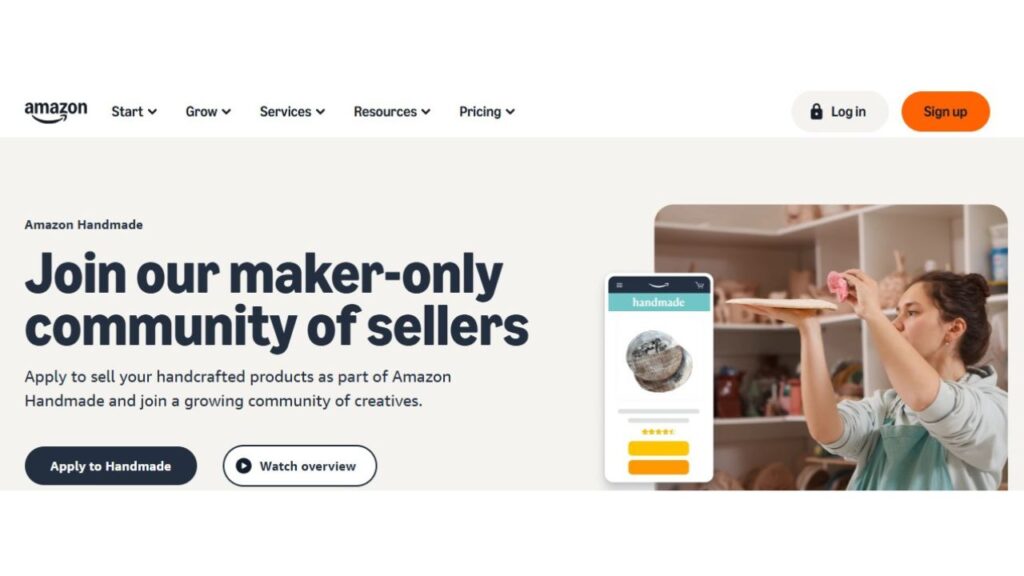
When deciding on a selling platform, you should take all fees and ease of use into consideration to select a marketplace. It is essential to ask yourself the following: Do I want to build a brand over the long term, or do I want to sell quickly?
Use a marketplace like Etsy to sell at first. Once you get a good feel for what sells, launch a Shopify store. This way, you will have owned your brand while continuing to receive steady sales.
Jewelry Photography and Branding
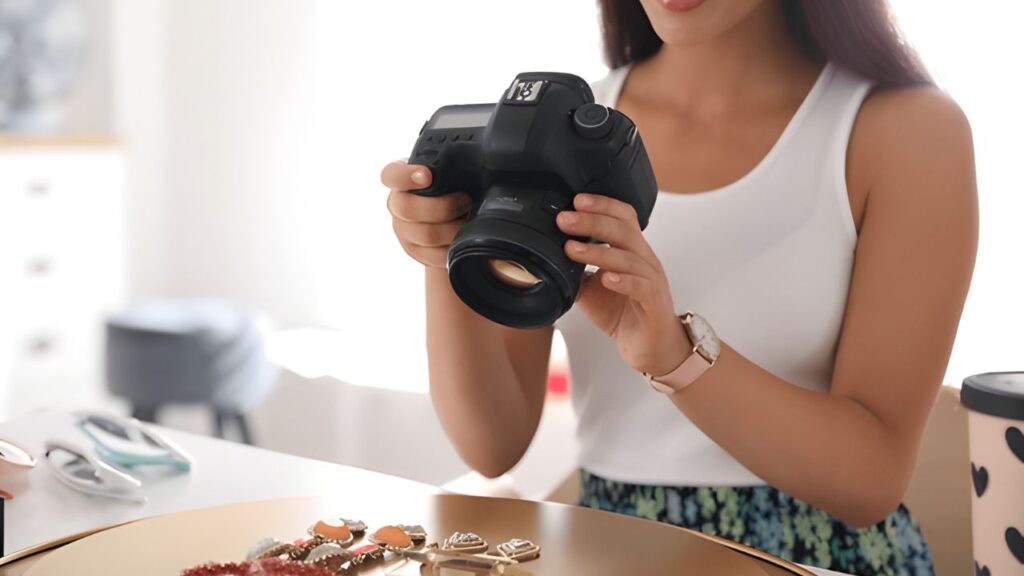
Jewelry sells through visual images. Effective product photography has a significant impact on sales. Low-quality images can negatively affect sales for even the best jewelry.
When it comes to photography, you don’t need an expensive photography studio. You can utilize natural light or a lightbox. Utilize simple backdrops; white or black backgrounds work nicely. Capture close-up images to showcase details. Utilize lifestyle shots, like earrings being worn on real people are particularly good.
Feel free to add basic editing to your photography using free tools, like Canva, or more advanced tools, like Lightroom. Use true-to-life colors so buyers can perceive what they are actually going to receive.
Selling jewelry is about photography, but branding is just as important as photos. Share your story. Share why you design jewelry, what makes it unique, and why your process is special.
Pro tip – consider including certificates of authenticity for precious metals or gemstones. Design unique packaging as well. Buyers tend to appreciate an unboxing experience as if it were personal, even when purchased online.
Pricing Strategies for Jewelry
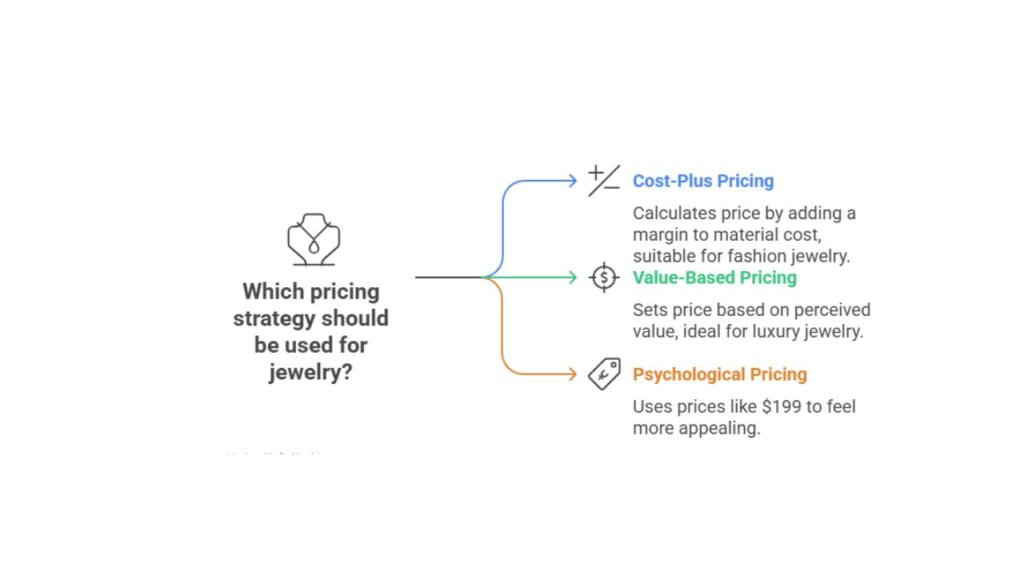
Selling jewelry can be a challenge when it comes to the price. If you price it too low, you are losing money; if priced too high, buyers will leave. The most effective sales approach is to strike a balance between cost, value, and competition.
There are 2 general pricing models. Cost-plus pricing is when you come up with the material cost and add a margin to make a profit on the sale. Value-based pricing means you set a price based on what the buyer thinks the piece is worth.
Luxury jewelry is typically offered based on value-based pricing. Storytelling, branding, and quality create the perceived value. In contrast, fashion jewelry is sold based on cost-plus.
Pay attention to competition and determine what jewelry similar to yours is priced at when selling it. You can also leverage psychological pricing strategies by making it a price such as $199 instead of $200. It may also “feel” better even when there is only a one-dollar difference.
Remember, jewelry is emotional, and when someone’s story resonates with them, many times they will pay the higher price
Marketing Channels That Work
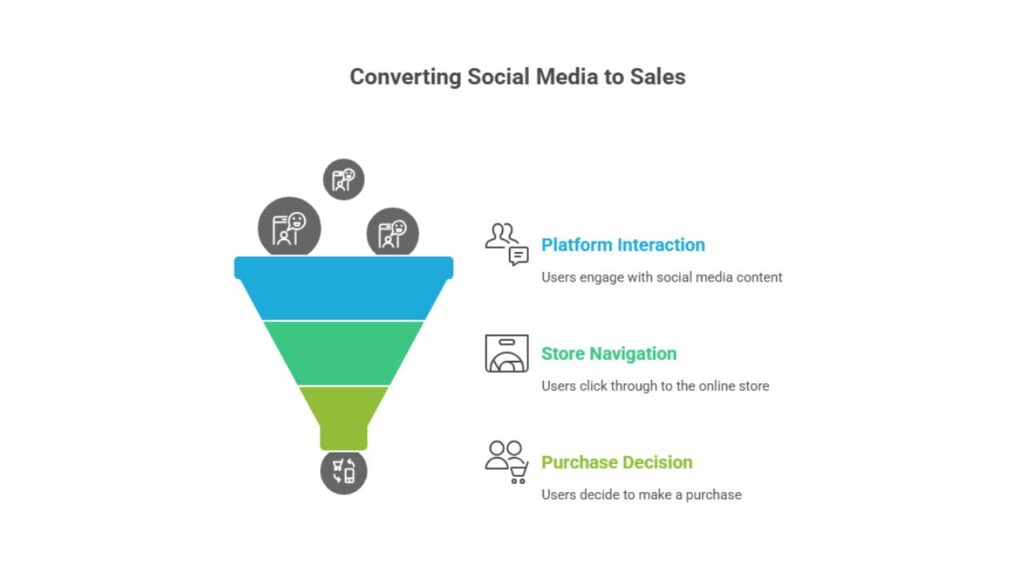
All the best jewelry in the world makes no difference if you don’t lean into marketing. Marketing channels are the vehicles to bring traffic in and to sell.
Social media is the number one channel for jewelry. Instagram and TikTok are great platforms since jewelry is visual. Post photos of the product, behind-the-scenes video, and short videos of jewelry. Use hashtags and converse, and meet with the audience by working with influencers.
Another great channel is Pinterest. People use Pinterest to browse all things fashion. Jewelry is a popular category on Pinterest, and pins stay for a longer period of time than a post on Instagram or TikTok.
Another marketing channel not to be overlooked is SEO for your e-store. Descriptions of products could include words such as “gold ring”, “handmade bracelet”, or “silver necklace”. Include alternative text when using photos to describe products. You could also have a blog about jewelry and fashion trends, or tips on caring for jewelry.
Paid ads are also effective marketing channels. Google Shopping ads will advertise your jewelry when buyers search for it. Instagram ads on a jewelry account page could have target audience interests of weddings, jewelry, or fashion.
Logistics, Shipping, and Customer Trust
Shipping and logistics follow marketing as the next priority for your business. This portion could be the deal breaker. Just like with your marketing, the first step would be to find reliable shipping partners (USPS, FedEx, UPS, DHL, etc). Always provide your customers with tracking numbers to know where their shipment is throughout the tracking process. For item price simplicity, consider offering free shipping or flat-rate shipping.
Packaging can also be a large trust factor. Add a thank-you note, or a small ‘bonus’ gift to wow your customers.
Trust is the key to any online sale. Incorporate customer reviews, customer testimonials, and direct and clear return policies in relation to your store. Add an “Secure Checkout” badge, or “SSL Protected.” Adding these little details can lower your customers’ fears before making a purchase.
Legal and Business Considerations
Selling jewelry is a legitimate source of income, but you’ll want to be prepared to follow these basic legal and business steps.
The first thing is to register your business. You can opt to be a sole proprietorship or an LLC to provide yourself with a little more level of protection. Make sure you check what you need to do locally, based on your business structure.
The next step is taxes. If you are going to be selling across state lines or internationally, you will want to understand sales tax and import/export rules. There are a lot of company platforms that assist with tax collection in the process, but it is good to have a foundational understanding of these rules regardless.
In addition, jewelry has other specific regulations. If you are selling gold/silver/metals, or gemstones, you may be required to provide hallmarking or to provide certifications for authentic items. This is solely for your protection, but also for the protection of the buyer.
Finally, you will want to protect your brand. When possible, register your business name and logo as a trademark to protect your brand identity from other people duplicating it.
Conclusion
Selling jewelry online can be a journey – a journey that starts with picking the right platform, setting up your store with strong images and your competitive prices, along with marketing, shipping, and more legal steps in between.
The jewelry market is competitive, but in fact, as competitive as the jewelry market is, there are equal opportunities. Start small – take the plunge and begin testing your products until you gain the synthesized expertise that results from continuous learning. One product on one platform can ultimately grow to be a powerful brand if you are consistent.
If you need professional image enhancement for your jewelry store, UK Clipping Path jewelry image retouching experts can help.
FAQs of How to Sell Jewelry Online Successfully
What amount do I need to begin my business?
You can start your business with a minimal budget. If you make the jewelry yourself, the bulk of your costs will be for materials and the costs for using a platform. You can even start by selling through social media marketplaces and not incur any costs.
How do I determine the price of my jewelry?
A good place to start in jewelry pricing is to take your material and labor costs, then multiply that number by four to not only account for your costs, but also any costs associated with using the specific platform, and to make a profit. It is also best practice to watch what others are charging for comparable items.
Can I take great pictures with my phone?
Yes! Utilize natural light from a window and a basic background. Focus on capturing fine details of your pieces. Lighting is far more important than an expensive camera and will yield the best results.
How important is branding?
Branding is key! It’s your narrative and what differentiates you from others. Brand identity cultivates trust and helps with recall. It is embodied by your logo, packaging, and the writing style of your photos and voice.
Should I sell on my own website or a marketplace?
Etsy and other marketplaces allow for instant access to buyers. Your own website, built on something like Shopify, gives you total control over your brand and customer relationships. Many sellers successfully use both.
How do I handle returns?
Make sure to have a clear and fair return policy on your website. Customers need to feel safe trusting you. Decide if you will offer refunds, store credit, or if you will definitely keep the exact product ID and timeframe.
Do I need to charge sales tax?
Yes, you will need to collect and pay sales tax. Some rules vary by state or country. E-Commerce platforms like Shopify and Etsy have included tools allegedly to help you collect the correct sales tax automatically.


